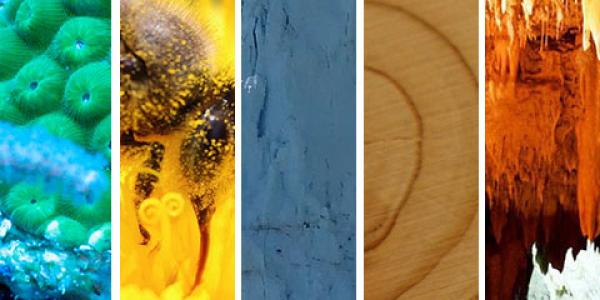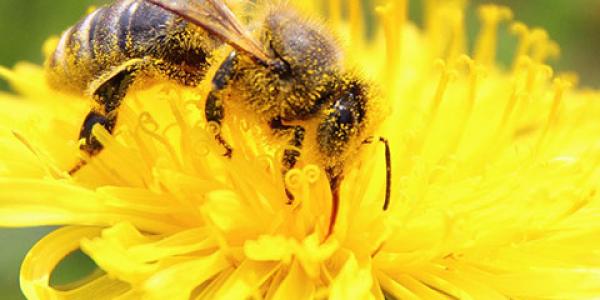
If you have allergies, you know exactly what this bee is covered in. It’s pollen! Every year around springtime, pollen spores come out and wreak havoc on thousands in the form of itchy watery eyes, runny noses, and uncontrollable sneezing. But how can these pesky spores help scientists learn about the past climate?
Smaller than a Pinhead but Full of Information
Pollen grains are the sperm-carrying reproductive bodies of seed plants like conifers, cycads, and flowering plants. Each of these grains has its very own unique shape depending on what plant it comes from, and their walls are made of a substance known as sporopollenin, which is very chemically stable and strong.
When pollen grains are washed or blown into bodies of water, their tough outer walls allow them to be preserved in sediment layers in the bottoms of ponds, lakes, or oceans. Because of their unique shapes, scientists can then take a core sample of the sediment layers and determine what kinds of plants were growing at the time the sediment was deposited. Knowing what types of plants were growing in the area allows scientists to make inferences about the climate at that time by using knowledge about modern and historical distributions of plants in relation to climate.
Once they take a core sample, the scientists isolate the pollen and spores from the sediments and rocks using both chemical and physical means. The grains are very small, typically between 10 and 200 micrometers, which requires mounting them on microscope slides for examination. To give you an idea of how small that really is, there are 1,000 micrometers in 1 millimeter, and a millimeter is about equal to the width of a pinhead. The scientists then count and identify the grains using a compound microscope and generate diagrams of the type and abundance of pollen in their samples.
Investigating the Past to Reveal Our Impact
By analyzing pollen from well-dated sediment cores, paleoclimatologists can obtain records of changes in vegetation going back hundreds of thousands, and even millions of years. Not only can pollen records tell us about the past climate, but they can also tell us how we are impacting our climate. Comparing trends in vegetation from the last few thousand years to recent trends in vegetation can also help scientists determine whether human activities have had significant impacts on ecosystems.
NCEI’s Paleoclimatology Program distributes the data products of various collaborative efforts to collect and organize pollen records from around the globe. These data include pollen counts and related information, as well as several different derived datasets. Check out all of our available fossil and surface pollen data on the Paleoclimatology Program’s Fossil and Surface Pollen Data web page.



